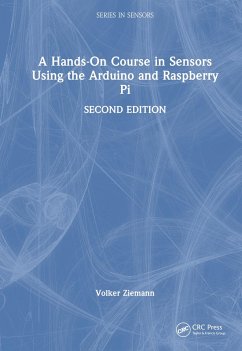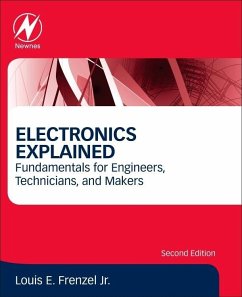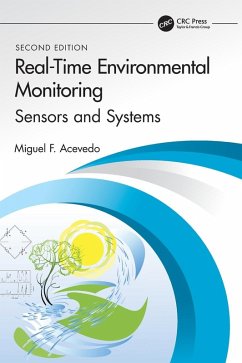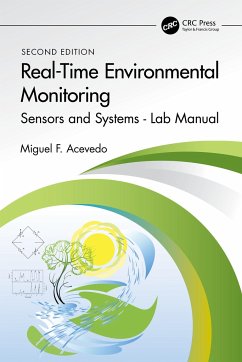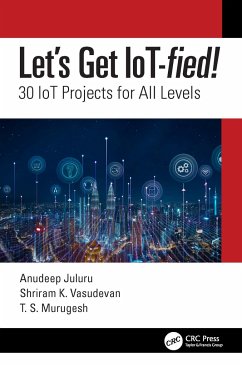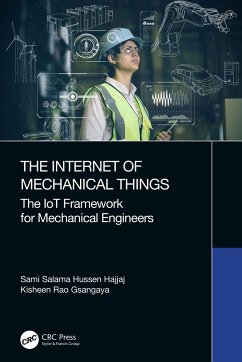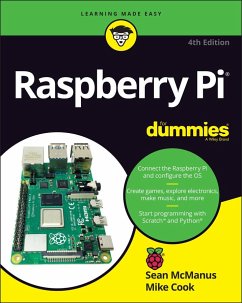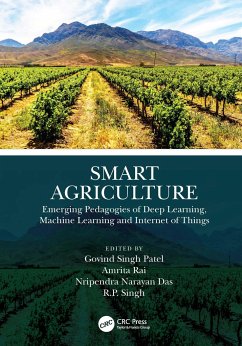
A Hands-On Course in Sensors Using the Arduino and Raspberry Pi
Versandkostenfrei!
Versandfertig in 6-10 Tagen
88,99 €
inkl. MwSt.
Weitere Ausgaben:

PAYBACK Punkte
44 °P sammeln!
A Hands-On Course in Sensors Using the Arduino and Raspberry Pi is the first book to give a practical and wide-ranging account of how to interface sensors and actuators with micro-controllers, Raspberry Pi and other control systems. The author describes the progression of raw signals through conditioning stages, digitization, data storage and presentation.The collection, processing, and understanding of sensor data plays a central role in industrial and scientific activities. This book builds simplified models of large industrial or scientific installations that contain hardware and other buil...
A Hands-On Course in Sensors Using the Arduino and Raspberry Pi is the first book to give a practical and wide-ranging account of how to interface sensors and actuators with micro-controllers, Raspberry Pi and other control systems. The author describes the progression of raw signals through conditioning stages, digitization, data storage and presentation.
The collection, processing, and understanding of sensor data plays a central role in industrial and scientific activities. This book builds simplified models of large industrial or scientific installations that contain hardware and other building blocks, including services for databases, web servers, control systems, and messaging brokers. A range of case studies are included within the book, including a weather station, ground-vibration measurements, impedance measurements, interfacing medical sensors to web browsers, the profile of a laser beam, and a remote-controlled and fire-seeking robot.
This second edition has been updated throughout to reflect new hardware and software releases since the book was first published. Newly added features include the ESP32 microcontroller, several environmental and medical sensors, actuators for signal generation, as well as a chapter on web sockets; all illustrated in new case studies.
This book is suitable for advanced undergraduate and graduate students taking hands-on laboratory courses in physics and engineering. Hobbyists in robotics clubs and other enthusiasts will also find this book of interest.
Features:
Includes practical, hands-on exercises that can be conducted in student labs, or even at home
Covers the latest software and hardware, and all code featured in examples is discussed in detail
All steps are illustrated with practical examples and case studies to enhance learning
https://github.com/volkziem/HandsOnSensors2ed
The collection, processing, and understanding of sensor data plays a central role in industrial and scientific activities. This book builds simplified models of large industrial or scientific installations that contain hardware and other building blocks, including services for databases, web servers, control systems, and messaging brokers. A range of case studies are included within the book, including a weather station, ground-vibration measurements, impedance measurements, interfacing medical sensors to web browsers, the profile of a laser beam, and a remote-controlled and fire-seeking robot.
This second edition has been updated throughout to reflect new hardware and software releases since the book was first published. Newly added features include the ESP32 microcontroller, several environmental and medical sensors, actuators for signal generation, as well as a chapter on web sockets; all illustrated in new case studies.
This book is suitable for advanced undergraduate and graduate students taking hands-on laboratory courses in physics and engineering. Hobbyists in robotics clubs and other enthusiasts will also find this book of interest.
Features:
Includes practical, hands-on exercises that can be conducted in student labs, or even at home
Covers the latest software and hardware, and all code featured in examples is discussed in detail
All steps are illustrated with practical examples and case studies to enhance learning
https://github.com/volkziem/HandsOnSensors2ed





